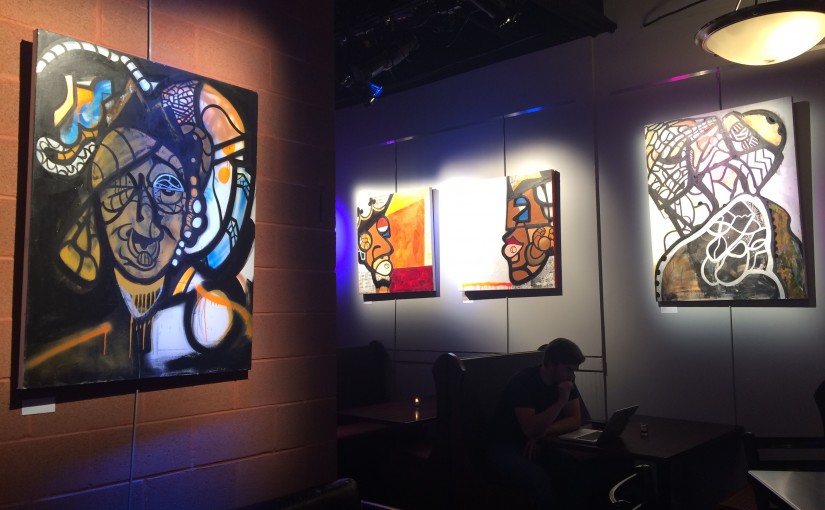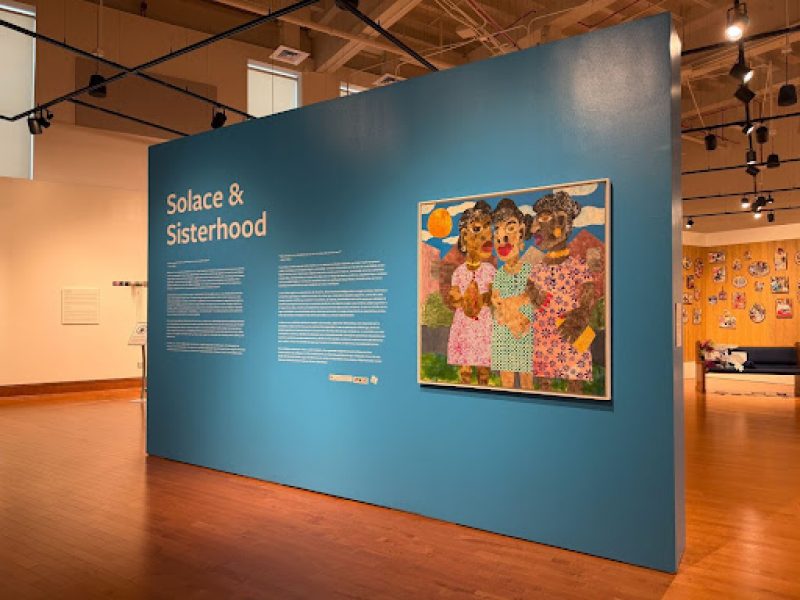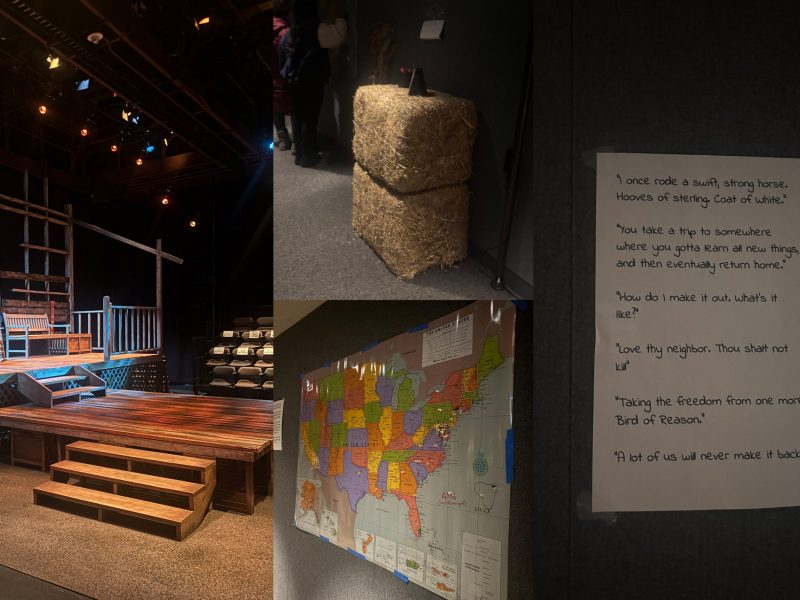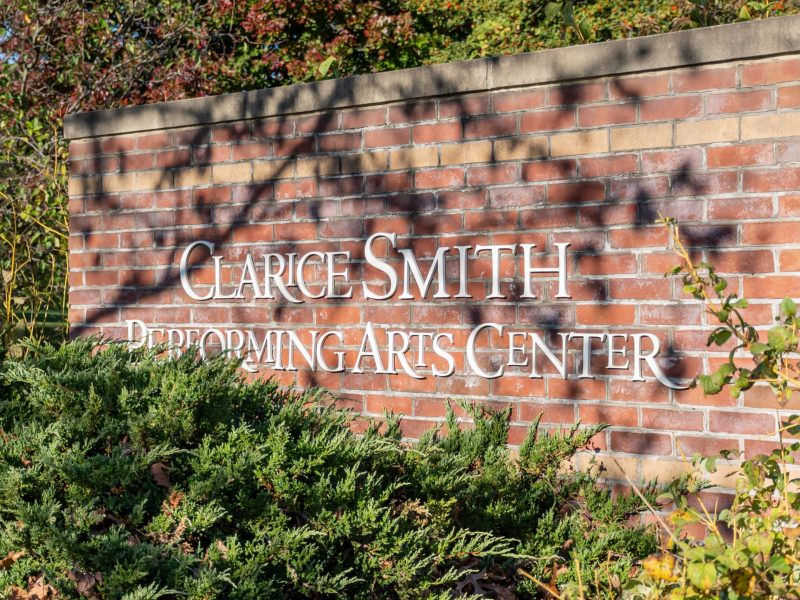The stairway leading up to the second floor of MilkBoy ArtHouse is nearly dark. It’s painted a deep crimson. And it’s narrow. So by the time you’ve reached the second floor, color and space is a somewhat desperate, intrinsic need.
It leads to the opening of the venue’s newest exhibition: “Trail & Tribe,” a collection of works completed by university alumnus Korey Richardson during his time here. The event was held on Feb. 27.
The gray, paneled walls are adorned with bold, black lines and curves, an assortment of geometric shapes, neutrals and arresting shades of blue, orange and red, among other colors.
“Women Window” is one of the largest pieces. Inspired by David Driskell’s “African Women, Windows,” there are drips, splatters, smudges, brought together to exude an image that is “majestical” and “classy,” Richardson said.
“Black King” and “Black Queen” are displayed on separate canvases, but operate as one. They face each other, and much of the queen’s canvas is blank, with a single bright orange line reaching toward the king, whose canvas is bursting with hues.
Many of his pieces are responses to the environments around him. With “Black King” and “Black Queen,” he wanted to put “black figures or black images to the forefront.”
“I wanted to speak to what people don’t,” he said.
Richardson grew up in Prince George’s County in a working class family, so his parents didn’t have enough time for things like helping with homework.
“It affected me as a person in society,” he said. “I felt less than, not as equipped, irregular.”
He was placed in special education classes; but as an adult, he had the opportunity to work with Prince George’s County Public Schools, and got a more intimate understanding of how the school system functions.
This prompted the creation of “MDPG,” (the abbreviations for Maryland and Prince George’s County, respectively) which has his psychoanalysis report underlaid below abstract body parts painted with elements of red and a purplish, mauvish gray in the upper right corner.
Kendrick Lamar’s critically acclaimed 2015 album, To Pimp a Butterfly, had a direct effect on “Cacoon.” On the song “Mortal Man,” Lamar recites a poem that opens with “The caterpillar is a prisoner to the streets that conceived it.” By the end of it: “Wings begin to emerge, breaking the cycle of feeling stagnant/Finally free, the butterfly sheds light on situations that the caterpillar never considered, ending the internal struggle.”
The piece illustrates a young man waiting outside of the cocoon, waiting to admire the long-curated growth and evolution of the caterpillar. The young man is draped in a gold chain and a gold crown.
The metallic shade has prominence in all the pieces on display. To him, it represents a degree of elitism and empowerment.
“One of the things I kind of wanted to do was create work that was tribal, but also kind of spoke to street art as well,” he said. “Also, identity was a big thing.”
Richardson said developing his style was a fun cycle of trial and error. He has been inspired by artists like Driskell and Romare Bearden, as well as street artists.
As a student here, Richardson majored in painting and printmaking and was a part of the art honors program. He spent much of his time in this university’s Driskell Center, which served as a haven and source of inspiration for the artist.
There were times where faculty did not understand his vision, but overall their honest feedback and the structure of the program benefited him. Now, his piece “Windows” is in the Driskell Center’s private collection.
“It kind of pushed me more than anything, being in that type of environment as an artist,” he said.
Richardson graduated in 2016, and while people have come to appreciate his distinct style, he is looking to evolve, particularly into more abstract pieces and the street art that inspires him.



